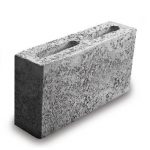What is Precast Concrete?
Precast concrete is a construction material produced by casting concrete in a reusable mold or form off-site and then cured in a controlled environment before being transported to the construction site. This method allows for the creation of a variety of precast concrete elements, including panels, beams, columns, and other structural and architectural components.
Why is Precast Concrete Used?
- Efficiency in Construction: Precast concrete offers a more efficient construction process compared to traditional cast-in-place concrete. Elements can be produced concurrently with on-site work, reducing construction time.
- Consistency and Quality: Precast concrete is manufactured under controlled conditions, ensuring consistent quality and strength. The controlled environment minimizes the impact of external factors on the curing process, resulting in more reliable and durable structures.
- Versatility: Precast concrete allows for a wide range of shapes, sizes, and finishes, making it a versatile choice for various applications. It can be customized to meet specific project requirements and design aesthetics.
- Cost-Effective: While initial costs may vary, precast concrete often proves to be cost-effective over the life of a structure. Faster construction, reduced labor requirements, and minimal on-site formwork contribute to overall savings.
- Reduced Site Disruption: Precast elements are manufactured off-site, minimizing disruption to the construction site. This is particularly beneficial in urban areas or locations with space constraints.
- Accelerated Construction Schedules: The parallel production of precast elements and on-site activities shortens construction schedules, enabling quicker project completion and faster occupancy of structures.
What Material is used in Precast Concrete?
- Aggregates: The primary component of precast concrete is aggregates, which include sand, gravel, crushed stone, or recycled materials. The type and size of aggregates influence the properties of the concrete.
- Cement: Portland cement binds the aggregates together in the concrete mix. It plays a crucial role in providing strength and durability to precast concrete.
- Water: Water is used in the concrete mix to activate the cement and facilitate the hydration process, which results in the hardening of the concrete.
- Admixtures: Various admixtures, such as accelerators, retarders, and plasticizers, may be added to the mix to modify the properties of the concrete, enhance workability, or achieve specific performance characteristics.
- Reinforcement: In some precast elements, steel reinforcement bars or mesh may be incorporated to enhance structural integrity and provide additional strength.
Why is Precast Concrete Better than Traditional Concrete?
- Quality Control: Precast concrete benefits from rigorous quality control measures in a controlled factory environment, leading to consistently higher quality compared to on-site cast concrete.
- Time Efficiency: Precast concrete allows for parallel construction processes, reducing overall project duration. This time efficiency is particularly advantageous in projects with tight schedules.
- Reduced Labor Requirements: The off-site manufacturing of precast elements reduces the need for extensive on-site formwork and labor, contributing to cost savings.
- Consistent Finishes: Precast elements can achieve consistent finishes and textures, ensuring a uniform appearance across the project. This is challenging to achieve with traditional cast-in-place concrete.
- Less Environmental Impact: Precast concrete production generates less waste, as excess material can be recycled. Additionally, the controlled manufacturing process contributes to better resource utilization.
- Minimized On-Site Disruptions: Prefabrication minimizes on-site disruptions, noise, and congestion, leading to a more efficient and organized construction site.
Importance of precast concrete:
- Consistent Quality: Precast concrete is manufactured in controlled factory conditions, ensuring consistent quality and adherence to specific standards. This consistency contributes to the reliability and durability of structures.
- Efficient Construction: Precast elements can be produced concurrently with on-site work, reducing construction time. This efficiency is particularly beneficial in projects with tight schedules and helps accelerate overall construction timelines.
- Versatility in Design: Precast concrete allows for a wide range of shapes, sizes, and finishes. It can be customized to meet diverse project requirements and architectural designs, offering flexibility in construction.
- Cost-Effectiveness: While initial costs may vary, precast concrete often proves to be cost-effective over the life of a structure. Faster construction, reduced labor requirements, and minimal on-site formwork contribute to overall savings.
- Reduced On-Site Disruptions: Off-site manufacturing of precast elements minimizes disruptions, noise, and congestion at the construction site. This is particularly advantageous in urban areas or locations with space constraints.
- High Strength and Durability: Precast concrete is known for its high compressive strength and durability. The controlled curing conditions during manufacturing contribute to the development of a robust and long-lasting material.
- Customization and Adaptability: Precast elements can be tailored to meet specific project needs, allowing for customization in terms of shape, size, and finish. This adaptability makes it suitable for a wide range of applications.
- Consistent Finishes and Textures: Precast concrete can achieve consistent finishes and textures, ensuring a uniform appearance across the entire project. This level of uniformity is challenging to achieve with traditional cast-in-place concrete.
- Environmental Benefits: Precast concrete production generates less waste compared to on-site construction, and excess material can often be recycled. The controlled manufacturing process also contributes to better resource utilization.
- Reduced Labor Requirements: Off-site manufacturing of precast elements reduces the need for extensive on-site formwork and labor. This can lead to significant labor cost savings and a more efficient use of skilled labor.
- Improved Quality Control: Precast concrete production allows for thorough quality control measures in a controlled factory environment. This reduces the likelihood of defects and ensures that each element meets specific standards.
- Faster Project Completion: The parallel production of precast elements and on-site activities shortens construction schedules, enabling quicker project completion. This faster completion can be particularly advantageous for time-sensitive projects.




